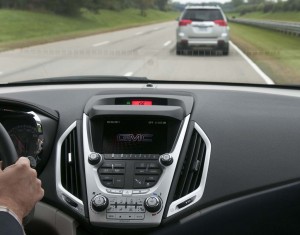
Consumers are demanding new collision avoidance technologies. However, according to a new study, they don't know how they work.
Studies consistently show that motorists want as many advanced safety technologies in use on their vehicles as possible. However, a new report shows that most folks don’t understand what many of those innovations do.
The University of Iowa Transportation and Vehicle Safety Research Division polled 2,000 drivers to see how much they really knew about nine different safety technologies in use on vehicles today.
What they found was that the majority of the participants had some experience with at least one of the technologies studied, but that 40% of the drivers said their vehicles behaved in “unexpected” ways.
“As technologies like rear-view cameras and lane departure warning systems advance and become more prevalent in the cars we’re driving there is a tremendous need to improve consumer understanding of these critical safety features,” said Daniel McGehee, director of the Transportation and Vehicle Safety Research Division at the UI Public Policy Center.
The nine safety technologies included:
- Back-up Camera: provides a view of the area directly behind the car when the vehicle is in reverse.
- Blind Spot Monitor: alerts drivers when there may be something located in their blind spot.
- Forward Collision Warning: warns drivers when they are closing in on the vehicle ahead too quickly.
- Anti-lock Braking Systems: prevents wheels from locking up, helps avoid uncontrolled skidding and provides some steering control in slippery conditions like snow.
- Rear Cross Traffic Alert: provides an alert to the driver that traffic is approaching from the left or right when the vehicle is in reverse.
- Adaptive Cruise Control: maintains the speed set by the driver and a pre-set following distance.
- Automatic Emergency Braking Systems: automatically applies moderate to hard braking when the system detects that a collision is imminent.
- Lane Departure Warning: alerts drivers when they drift into another lane when the turn signal is not activated.
- Traction Control: Works in the background to help accelerate and prevent wheel slippage (or “over-spinning”) when driving on slippery surfaces.
Of those, consumers reported they least understood adaptive cruise control (65%) and lane departure warning systems (36%). They were uncertain about features that have been standard in American cars for years – such as anti-lock braking systems and tire pressure-monitoring systems, according to the survey.
“The level of confusion about features that have been standard in American cars for quite awhile was really surprising,” McGehee says, noting that tire pressure monitoring and anti-lock braking systems have been in vehicles for some time.
(BMW, Audi, Mercedes partner to dominate autonomous vehicle tech. For more, Click Here.)
“The little details about how some of these systems work are really important when we’re talking about safety. We need to do a better job of making sure consumers are comfortable with them.”
(Click Here for details about Mercedes new C-Class Coupe.)
Not only do these systems individually make cars safer, working in concert, most play pivotal roles in the development of autonomous cars. Self-driving cars, aside from the convenience factor, are expected to be safer in the future.
(To see more about Donald Trump’s plans for automakers building in Mexico, Click Here.)
The international consulting firm of KMPG, according to Driverless Transportation, reports that the advanced safety and accident avoidance systems in autonomous vehicles could lead to a decline in accidents-per-vehicle of as much as 80%.

As I previously stated there are so many whistles, bells and flashing lights in modern autos that most people have no clue what they even mean. That of course comes from the fact that most new vehicle owners refuse to even read their owner’s manual (OM). Studies have shown the majority of new vehicle owner’s don’t know how to check the engine oil let alone change a flat tire. God forbid their cellphone should fail as they will be stranded until someone finds them.
If you really want to have a good laugh, ask a new car owner what oil viscosity and specification is required for their vehicle and how often the oil is suppose to be changed. (Even some new car dealers get this wrong).
BMW went to a digital display and algorithm to years ago to try and get people to change their oil when needed. Many people still use an improper specification oil which can and has caused serious engine damage. Had they actually read the OM, they’d have known what oil was required. Many people also change their oil every 3,000 miles which is often a waste of good oil and provides no advantage. It’s really amazing how much U.S. consumers in particular do not know about the products they buy or the proper maintenance for them.